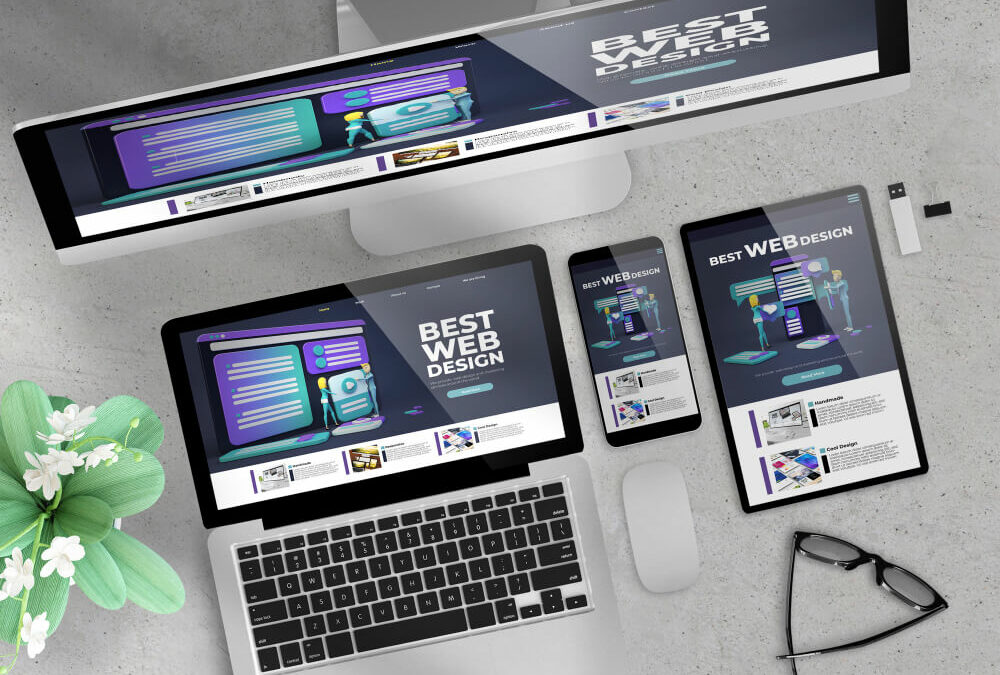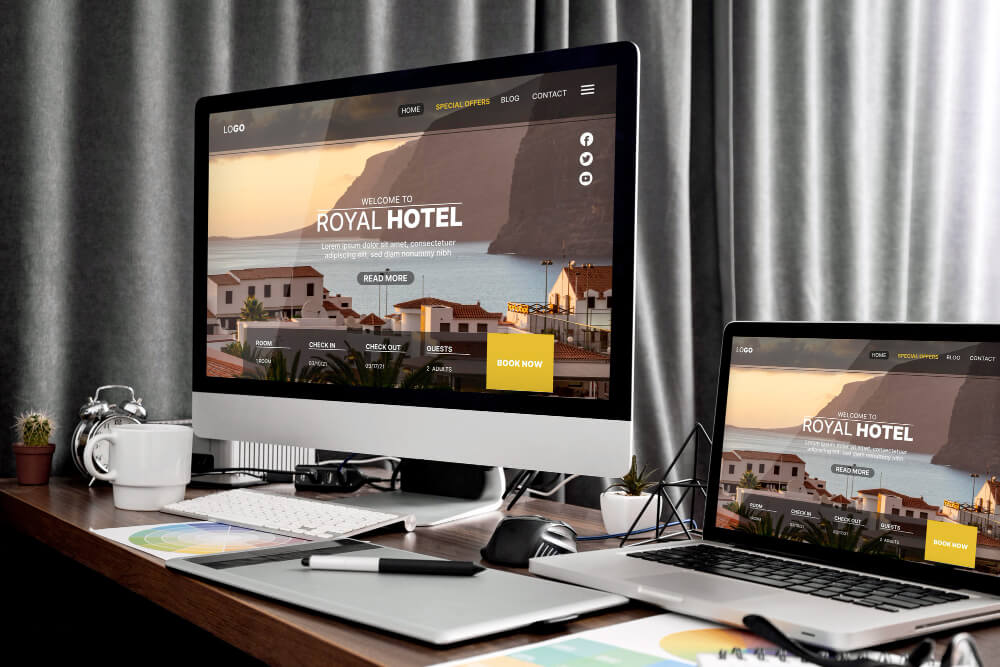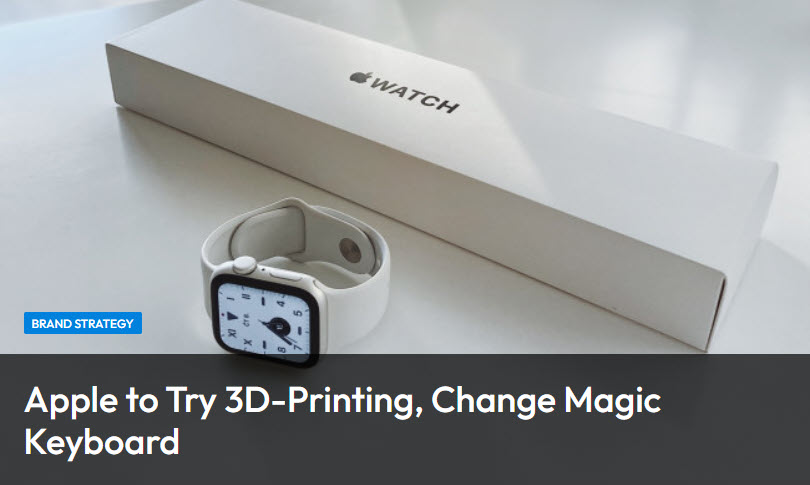How to Choose a Web Designer: 10 Expert Tips
How to choose a web designer is a crucial step in building a successful online presence for your business.
A good web designer can create a visually appealing website that attracts and retains customers, enhances user experience, and drives business growth.
However, with so many web design agencies and freelancers to choose from, finding the right web designer can take time and effort.
In this blog post, we will provide you with ten expert tips to help you choose a web designer who best meets your needs and delivers a website that exceeds your expectations.
Understanding the Significance of a WordPress Web Design
A website is often the first point of contact between a business and its potential customers. It’s a powerful marketing tool that can make or break a business’s online success.
The design of a website plays a crucial role in attracting and retaining visitors, conveying a company’s brand identity, and driving user engagement. Here are a few key ways web design impacts business success:
The Impact of Web Design on Business Success
- A visually appealing website design can attract and retain customers, making a memorable first impression.
- Responsive web design ensures a seamless experience across devices, catering to the growing number of mobile internet users.
- Intuitive navigation helps guide visitors to desired content or actions, reducing bounce rates and increasing user engagement.
- Consistent branding and design elements enhance brand recognition, making a business memorable and trustworthy.
- Well-placed call-to-action buttons can increase conversions, turning website visitors into paying customers.
The Role of a Web Designer
Web designers are responsible for creating the layout, functionality, and visual elements of a website.
They work closely with clients to understand their design objectives, business goals, and target audience. Here’s a breakdown of a web designer’s role:
- Creating a user-friendly experience through intuitive design ensures that website visitors can easily navigate and find what they’re looking for.
- Utilizing design software, coding, and graphics to bring a website to life, ensuring a visually appealing design that aligns with brand identity.
- Staying updated on design trends, usability principles, and best practices, ensuring that the website design is modern, user-friendly, and effective in achieving business goals.
Defining Your Web Design Needs
Before choosing a web designer, it’s important to define your web design needs. This step will help you communicate your design preferences and business goals clearly, making it easier for the web designer to understand and meet your expectations.
Identifying Your Aesthetic Preferences
Every business has a unique brand identity, and your website design should reflect that. Consider your color scheme, typography, imagery, and overall aesthetic preferences.
Think about how you want your business to be perceived by website visitors and how the design can support that perception.
Considering Your Industry-Specific Design Needs
Different industries have different design expectations and best practices. Research design trends, usability principles, and design conventions in your industry. Analyze competitor websites for design elements that work well and identify any design features or functionality specific to your industry.
How vital is customization to you?
Decide how necessary customization is to you. Are you looking for a template-based website design, or do you require a custom design?
Assess the level of uniqueness and differentiation you need for your website, considering factors such as scalability, resources, time, and budget.
Evaluating the Expertise of a Web Designer
Once you have a clear idea of your web design needs, it’s time to evaluate the expertise of potential web designers.
Assessing a web designer’s technical skills, reviewing their portfolio, and checking references are essential in choosing a web designer who can deliver a website that meets your expectations.
Assessing Their Technical Skills
Choosing a web designer’s technical skills is a crucial aspect of their expertise. Here are a few key areas to consider when evaluating a web designer’s technical mastery:
- Knowledge of web design software, content management systems, or design tools, ensuring they have the necessary skills to design and develop a website.
- Experience with responsive web design and mobile optimization, ensuring the website is user-friendly across devices and caters to mobile internet users.
- Ability to integrate functionality, such as e-commerce or blog features, ensuring the website can support your business’s specific needs.
- Familiarity with search engine optimization best practices, ensuring the website is optimized for search engines, improving visibility, and driving organic traffic.
- Process for testing website functionality and cross-browser compatibility, providing a website’s usability and functionality across different browsers.
Reviewing Their Portfolio and Case Studies
A web designer’s portfolio and case studies provide valuable insights into their design style, quality of work, problem-solving abilities, and design process. Here’s what to look for when reviewing a web designer’s portfolio and case studies:
- Design style and quality of work, ensuring their design projects align with your design preferences and business goals.
- Problem-solving abilities, examining case studies that demonstrate their process, results, and ability to meet client objectives.
- Versatility, assessing the diversity of projects in their portfolio, showcasing their ability to work on different design projects.
- Client feedback, understanding their process for gathering client feedback, making design revisions, and ensuring client satisfaction.
Checking References and Client Feedback
Checking references and client feedback is a crucial step in choosing a web designer. Here’s what to consider when checking concerns and client feedback:
- Ask for references and check online reviews and testimonials from past clients, gaining insights into their experience working with the web designer.
- Look for a designer who is willing to listen to your ideas, provide input, and work collaboratively, ensuring a smooth working relationship.
- Consider the designer’s experience and expertise in your industry or niche, as a designer with relevant experience can better understand your design needs.
- Communication and collaboration skills: a good web designer should communicate effectively, provide regular updates, and meet project deadlines.
Digital Footprint Solutions, Inc Google Reviews
Financial Aspects of Hiring a Web Designer
The financial aspects of hiring a web designer are an essential consideration. Setting a budget, understanding pricing structures, and ensuring transparency in pricing are critical factors in choosing a web designer who best fits your budget and delivers a website of high quality.
Setting Your Budget for Web Design Services
Setting a budget for web design services is a crucial step in the web design process. Here’s what to consider when selecting your budget:
- Determine your budget early on, considering both design and development costs, as well as ongoing maintenance and support.
- Understand that quality web design comes with a cost, and it’s important to invest in a website design that aligns with your business goals.
- Research and compare prices from multiple web designers, ensuring you get a fair price for the services you require.
- Look for web designers who offer transparent pricing, clear contract terms, and a breakdown of services included in their pricing.
Understanding the Pricing Structure and What’s Included
When selecting a web designer, it’s crucial to understand the pricing structure and what services are included in the package. Transparency is vital, so look for a web designer who offers a transparent pricing model.
Remember, it’s not just about the price; consider the value of the services provided. Remember to ask about any additional fees or charges that may arise during the project. To make an informed decision, compare the pricing and services offered by different web designers. Lastly, find a web designer who is willing to work within your budget.
The Importance of User Experience in Web Design
User experience (UX) plays a crucial role in website design. A website that provides a positive user experience can drive user engagement, increase website traffic, and, ultimately, contribute to business success. Here’s why user experience is vital in web design:
The Designer’s Approach Towards User Experience
When choosing a web designer, it’s important to consider their approach towards user experience. Here’s what to look for when assessing a web designer’s focus on user experience:
- Look for a web designer who understands the importance of user experience and can prioritize it in their designs.
- Ask for examples of websites the designer has created that demonstrate a strong focus on user experience.
- Consider the designer’s approach to information architecture, navigation, and layout, as these are crucial elements of user experience design.
- Ensure the designer understands your target audience and can design with their needs, preferences, and behaviors in mind.
- Look for a designer who can create responsive designs that work well on all devices, ensuring a seamless user experience across platforms.
- Check if the designer has experience in creating accessible designs for users with disabilities, ensuring inclusivity and usability.
Ownership and Maintenance Post-Website Launch
After your website goes live, it’s important to clarify ownership, maintenance, and updates. Here’s what to consider when discussing ownership and post-launch maintenance with a web designer:
Will you be the owner of your website once it goes live?
Ensure that you will be the owner of your website and its content after it is launched. Here’s why website ownership post-launch is important:
- Full control of website content, design, and functionality, enabling you to make updates, changes, and improvements as needed.
- Clarify ownership of any third-party tools or plugins used on the website, ensuring you have the necessary access and control over these elements.
- Understand the maintenance requirements for your website and discuss ongoing support with the web designer, ensuring your website remains up-to-date, secure, and optimized.
- Clarify who will be responsible for making updates or changes to the website post-launch, understanding the process and timelines for website maintenance.
- Consider whether the web designer offers any training or resources to help you manage your website effectively, ensuring a smooth transition post-launch.
Frequently Asked Questions
1. How do you choose to hire a good web designer?
To choose a good web designer:
- Assess their portfolio to understand their style and expertise.
- Evaluate their communication skills and ability to grasp your website vision.
- Check if they have experience in building websites for your industry.
- Ensure they are knowledgeable in responsive design, user experience, and SEO optimization.
2. What do you look for in a web designer?
When choosing a web designer, it’s essential to find someone who understands your brand and target audience.
Look for a strong portfolio showcasing their previous work, and consider their experience and expertise in various design tools.
Additionally, ensure the web designer is knowledgeable about responsive design principles for a mobile-friendly website.
3. What is the average cost of a web designer?
The average cost of a web designer can vary based on factors like experience, location, and project complexity.
Basic website design can range from $800 to $5,000, while more intricate websites with custom features or e-commerce capabilities can exceed $10,000.
Obtain multiple quotes and compare prices and services.
4. How do I choose a web developer or web designer?
Are you looking to hire a web developer or designer? Start by determining your budget and needs. Find someone with industry experience and check their portfolio for a style match.
Remember to consider their communication skills and availability for updates and maintenance.
5. What qualifications should a good web designer have?
A good web designer should possess a strong portfolio highlighting their design expertise and experience. They should have a solid grasp of HTML, CSS, and other coding languages and excellent communication skills to understand client requirements and work collaboratively.
Additionally, familiarity with user experience (UX) design principles is crucial for creating impactful websites.
6. Is it important for my web designer to know about SEO and mobile optimization?
Yes, your web designer must have expertise in SEO and mobile optimization. A website that isn’t mobile-friendly may struggle to rank well in search engines. An SEO-optimized website design can enhance visibility and attract more traffic. Make sure your web designer has experience in both areas before making a hiring decision.
Conclusion
In conclusion, choosing the right web designer is crucial for the success of your online presence. They play a pivotal role in creating a visually appealing and user-friendly website that aligns with your brand and business goals.
When evaluating potential web designers, consider factors such as their expertise, portfolio, client feedback, and pricing structure.
Additionally, make sure they prioritize user experience and have knowledge of SEO and mobile optimization. By taking the time to carefully select a web designer who meets your specific needs, you can ensure a well-designed website that engages users, drives traffic and ultimately contributes to the growth and success of your business.
Ready To Increase Your Online Visibility?
Don’t miss out on potential clients. Reach out to us now and let’s explore how we can collaborate effectively.
6. Display Social Proof
The Power of Peer Validation
In an era where consumers are bombarded with endless choices, distinguishing your brand from the competition becomes crucial. Here, social proof emerges as a compelling tool.
It’s a psychological phenomenon where people look to the actions of others to guide their behavior, especially in uncertain situations.
Types of Social Proof
There are various forms of social proof that businesses can harness:
- Customer Testimonials: Genuine feedback from satisfied customers can resonate powerfully with potential clients. These testimonials provide real-world examples of how your product or service has positively impacted others.
- Reviews and Ratings: These are often the first things potential customers look for when purchasing. A high average rating or many positive reviews can significantly sway purchasing decisions.
- Endorsements: When an expert in your industry or a well-known celebrity endorses your product, it lends significant credibility to your offerings.
- Case Studies: Detailed accounts of how your product or service solved a particular problem for a customer can provide tangible evidence of its value.
- User Count and Client Logos: Displaying the number of users or clients, especially if the count is high or includes notable companies, can add a trust factor to your brand.
Positioning Matters
While having social proof is great, its positioning on your site can make a significant difference.
Place reviews, testimonials, or endorsements where they are obviousCriticato test and update your site continuallyI’d like you to ensure and, like near CTAs or pricing information, to reinforce the decision-making process.
Authenticity is Key
While it might be tempting, avoid fabricating or exaggerating social proof. Today’s consumers are savvy and can often spot insincerity.
Authentic and genuine social proof will always resonate better than something that appears too polished or scripted.
Benefits of Displaying Social Proof
- Reduced Uncertainty: New visitors to your site might be unfamiliar with your brand. Positive feedback reduces the perceived risk of choosing your product or service.
- Enhanced Trust: Trust is a cornerstone of any business relationship. Genuine testimonials and reviews can quickly establish this trust.
- Increased Conversions: With the combined effects of reduced uncertainty and enhanced trust, the likelihood of visitors converting into customers significantly increases.
7. Optimize for Mobile Users
The Rise of Mobile Browsing
Over the past decade, a significant shift has shifted from desktop to mobile browsing. With the proliferation of smartphones and tablets, more and more users are accessing the web on the go.
This transition means businesses must prioritize mobile optimization to cater to this vast and growing audience.
Why Mobile Optimization Matters
- User Experience: Mobile users have different expectations than desktop users. They desire quick, efficient, and seamless experiences tailored to smaller screens.
- Search Engine Rankings: Search engines, especially Google, prioritize mobile-optimized websites. With Google’s mobile-first indexing, your site’s mobile performance can influence its overall search engine ranking.
- Higher Engagement: A mobile-optimized site ensures users stay longer, explore more pages, and are more likely to convert, whether that means making a purchase, signing up, or any other desired action.
Critica Components of Mobile Optimization
- Responsive Design: This ensures your website adjusts to fit any screen size, offering a consistent device experience. Responsive designs automatically rearrange and resize content based on the device accessing the site.
- Fast Loading Times: Mobile users often have less patience for slow-loading sites. Optimize images, minimize code, and leverage browser caching to enhance mobile site speed.
- Intuitive Navigation: Due to the limited screen space, mobile website navigation should be straightforward and concise, allowing users to find what they’re looking for without endless scrolling or searching.
- Easy-to-Click Elements: Whether it’s links, buttons, or forms, ensure they are large enough to be tapped easily on a touchscreen without errors or frustration.
- Avoid Flash or Pop-ups: Many mobile devices don’t support Flash, and pop-ups can be particularly intrusive on smaller screens. It’s best to avoid these elements for a smoother mobile experience.
Regular Testing and Updates
With the plethora of devices and screen sizes available, it’s vital to continually test and update your site. Tools like Google’s Mobile-Friendly Test can provide insights into your site’s mobile optimization status.
Also, please keep abreast of mobile UX trends and best practices to make sure your site remains relevant and user-friendly.
To wrap up, optimizing your website for conversions is a continuous journey of understanding, testing, and refining.
As the online landscape and user preferences evolve, stay agile, and always prioritize your audience’s needs.
Implementing these strategies will ensure your conversion rate keeps climbing.
Unlock your business's full potential online.
Don’t wait for opportunities; create them. Contact us now and let’s transform your digital journey together






